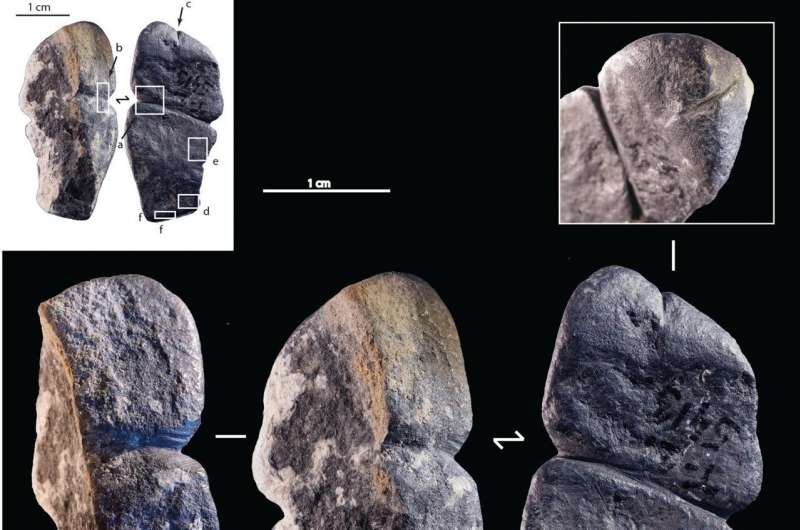June 20, 2023 report
This article has been reviewed according to Science X's editorial process and policies. Editors have highlighted the following attributes while ensuring the content's credibility:
fact-checked
peer-reviewed publication
trusted source
proofread
Ancient pendant found in Mongolia may be oldest known carving of a penis

An international team of archaeologists, ethnographers and historians has found a pendant that may be the earliest known example of a carved phallus. They have published their findings in the journal Scientific Reports.
In 2016, archaeologists working at a dig site in the Khangai Mountains of northern Mongolia uncovered a stone approximately four centimeters in length that had been carved by a human. In this new effort, the research team took a closer look at the stone, which was originally named simply T21. Dating of material around it suggested the stone was from approximately 42,400 to 41,900 years ago, putting its creation in the Upper Paleolithic.
It was the two grooves that caught the attention of the new research team—one of them wraps around the midsection of the stone and another runs its length from top to bottom. The researchers suspect the grooves were carved into the stone to make it resemble a human penis. They further suggest the midsection groove was meant to represent the glans while the top-to-bottom groove was meant to replicate the look of the urethral opening.
The researchers note that the flip side of the stone is quite shiny, indicating a lot of rubbing against a soft material. They suggest that soft material was likely human skin as the stone was hung around the neck and used as a pendant.
The conclusions drawn by the researchers have already resulted in comments by others in the field, with many noting that the stone could just as well be a tool used for an unknown purpose. Also, the midsection groove could have been made for no other reason than to allow the tying of a string for hanging around the neck.
Still, if the pendant is eventually accepted by the archaeology and historical community as a depiction of a penis, it would represent by far the oldest known example of a carved phallus. The current record is roughly half that old—a stone that was carved approximately 28,000 years ago and found in Germany.
More information: Solange Rigaud et al, Symbolic innovation at the onset of the Upper Paleolithic in Eurasia shown by the personal ornaments from Tolbor-21 (Mongolia), Scientific Reports (2023). DOI: 10.1038/s41598-023-36140-1
Journal information: Scientific Reports
© 2023 Science X Network





















